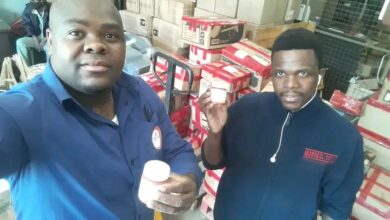Catapult Your Team’s Performance – This Is How

Catapult Your Team’s Performance – This Is How. The recipe for business success is, and likely will remain, a work in progress as the corporate world experiences new trends, changing technology, and a shift in professional mindsets with each passing generation. While it may be easy to find the right ingredients for this recipe, how you use them makes all the difference.
We all know that a team that works well together can meet targets effectively – there’s no secret to that. In many cases, a key ingredient is company culture. A solid and positive culture works wonders by keeping employees engaged, motivated, and less likely to seek other opportunities or fall into quiet quitting. According to Gallup, engaged employees are 18% more productive and 23% more profitable, Conversely, disengaged employees can cost companies 18% of their salary in lost productivity. In 2024, employee engagement is arguably the biggest influence on workplace productivity.
Additionally, elements such as aligned goals and expectations, regular feedback, self-assessments, rewarding colleagues, and training and development opportunities all contribute to the success mix of business. However, trying to address all these aspects simultaneously isn’t sustainable. Pace yourself and ensure you understand each element well enough to confidently implement them within your team.
Understand how to set realistic goals and expectations
The performance management systems we (ActionCoach SA) recommend to our clients serve as a fundamental step towards achieving desired outcomes through specific alignment. It supports a shared vision and sense of purpose among team members, making them feel more connected and invested in the business’s mission.
Additionally, clear goals and expectations provide necessary clarity and direction, reducing confusion and minimising misunderstandings. It also improves communication and collaboration, as team members working towards the same objectives are more likely to share information and work together effectively. It can aid problem-solving, innovation, and decision-making. It finally increases accountability as team members are more inclined to take ownership of their work and strive for high-quality results.
Prioritise feedback
Making feedback a regular activity can help boost productivity and work quality by offering team members guidance for improvement, which helps reduce errors. It improves communication and collaboration, leading to better problem-solving, innovation, and decision-making as team members are more inclined to share information and ideas. Team members feel valued and recognised, which improves morale and commitment. It enables managers to offer targeted coaching and development opportunities, helping team members achieve their goals. It also ultimately leads to better retention and lower turnover by creating a supportive environment where employees feel appreciated.
Encourage self-assessment
When team members regularly reflect on their own performance, they become more aware of their strengths and areas for improvement. This self-awareness helps them make better decisions and work more effectively with others.
Self-assessment also boosts engagement and satisfaction. When employees feel they have control over their development, they are more likely to be committed and stay longer with the company. It promotes personal accountability, meaning team members take ownership of their performance, driving individual and team success.
Reward good performance
Rewarding good performance plays a key role in performance management by motivating team members to reach their goals and excel. When employees are recognised and rewarded for their achievements, it promotes a culture of excellence, encouraging a positive and collaborative work environment.
When team members see that their hard work is valued, they are more likely to stay committed and satisfied with their roles, which helps in retaining top talent and reducing turnover.
Rewarding good performance drives individual and team success and also attracts and retains high-performing employees. By creating a positive and supportive work environment, managers can ensure that their team remains motivated and engaged, leading to long-term business success.
Provide training and development
When employees have access to these opportunities, they feel valued and invested in their growth.
With the right skills and knowledge, team members can work more effectively, resulting in better outcomes for the team and the business. Additionally, it supports a culture of continuous improvement by encouraging ongoing learning and skill enhancement.
Exposure to new ideas and concepts can inspire team members, leading to better problem-solving and decision-making. It also supports succession planning by preparing employees for new roles and responsibilities, ensuring the business has the talent needed for future success.
And there you have it. Once you feel confident in your understanding of each element, you’ll be able to effectively blend them to create your business’s recipe for success.




